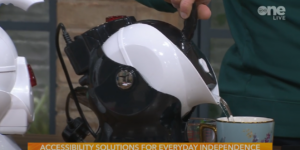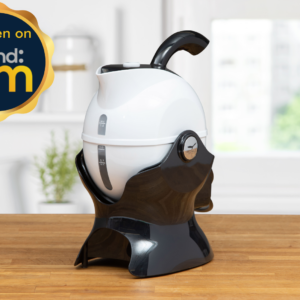Living with a disability, injury, or age-related mobility challenges can present various obstacles in our daily lives.
However, thanks to ongoing advancements in technology and design, assistive devices have evolved to offer newfound independence and improved quality of life for people of all ages. In this blog, we’ll explore some of the most innovative assistive devices that are transforming the way individuals overcome their daily living challenges.
Smart Home Assistance:
The rise of smart home technology has ushered in a new era of convenience and accessibility. Voice-activated assistants like Amazon Echo and Google Home can assist with tasks like turning on lights, adjusting thermostats, or even making phone calls, making daily living easier for those with mobility issues.
Exoskeletons for Mobility:
Exoskeleton technology has made incredible strides, providing individuals with impaired mobility the ability to stand, walk, and even climb stairs. Devices like the EksoGT and ReWalk are changing the lives of those with spinal cord injuries and other mobility limitations.
Wearable Health Monitors:
Wearable devices like smartwatches and fitness trackers have become mainstream, but they also offer valuable health monitoring features. These devices can track vital signs, detect falls, and send alerts to caregivers or medical professionals, promoting safety and peace of mind.
Braille E-Readers and Audio Books:
For the visually impaired, access to literature and information has greatly improved. Braille e-reader and audiobook services provide alternative ways to read and enjoy books, magazines, and other written content.
Customisable Prosthetics:
Advances in 3D printing have allowed for more personalised and affordable prosthetic limbs. Customisation options, improved functionality, and natural-looking designs empower amputees to lead active lives.
Mobility Scooters and Power:
Modern mobility scooters and power wheelchairs offer increased manoeuvrability and battery life, enabling users to participate in various outdoor activities and navigate their communities with ease.
Adaptive Apps and Software:
A wide range of mobile apps and computer software is designed specifically for people with disabilities. These apps assist with communication, organisation, and daily tasks promoting independence and connectivity.
Hearing Aids with AI:
AI-powered hearing aids can adjust settings in real-time based on the user’s environment, enhancing hearing clarity and quality. They also offer Bluetooth connectivity, allowing users to stream audio directly to their devices.
Daily Living Aids in the Home:
here’s a wide array of assistive devices designed for home use, making everyday tasks more manageable. These include:
- Grab Bars & Handrails: Installed in bathrooms and other critical areas to provide stability and support while standing or moving.
- Shower chairs and Bath Benches: Enhancing safety during bathing by offering a secure place to sit.
- Raised Toilet Seats: Making it easier to sit down and stand up, particularly for those with limited mobility.
- Kitchen Aids: Adaptive kitchen gadgets and utensils allow individuals with dexterity issues to prepare meals independently.
The presence of these aids in the home promotes comfort, safety, and independence, allowing individuals to maintain their daily routines and age in place with confidence.
Innovation in assistive devices continues to make remarkable strides, breaking down barriers and improving the daily lives of individuals with disabilities, injuries, or age-related mobility challenges. These devices not only enhance independence but also promote inclusion and accessibility in all aspects of life. As technology evolves further, we can anticipate even more groundbreaking solutions that empower people of all ages to live life to the fullest.














Leave a Comment